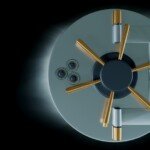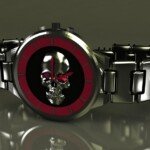Utilization accuracy: In-depth study of hydraulic CNC shearing machines
In the dynamic world of metal manufacturing, achieving clean, precise cutting is always crucial. Despite various cutting methods, hydraulic CNC shearing machines are a cornerstone technology, especially for linear cutting of metals, plates and strips. At Greatlight, weave precision in every process, we utilize advanced manufacturing technologies every day, including state-of-the-art hydraulic shear systems. Let’s explore why these powerful machines are essential and how they enhance the metal shape.
Beyond Muscles: Understanding Hydraulic CNC Shearing
The hydraulic shearer uses the huge, controlled power of the hydraulic pressure at its core, driving the moving upper blade along the fixed lower blade along the fixed lower blade, shearing the metal workpiece placed between them. What is the improvement "CNC" (Computer Numerical Control) variant is a complex computer system that controls the entire operation. Gone are the days of complex manual adjustments and relying on operator positioning skills. CNC brings automation and digital accuracy to every cut. Key components include:
- Hydraulic Power Unit (HPU): Generate high-pressure fluid flow to supply power to the cylinder.
- Hydraulic cylinder: Converts fluid pressure to linear motion of driving RAM and upper blade.
- Upper and lower blades: Hardened tool steel blades (usually replaceable) perform shearing actions. Blade clearance and angle are key settings.
- Memory: The structure of the fixing upper blade is moved by the hydraulic cylinder.
- bed: The sturdy frame accommodates the lower blade and supports the workpiece.
- Backgauge: The CNC-controlled adjustable stop allows accurate positioning of workpieces of each cutting length.
- CNC controller: The brain of the machine. The operator inputs the cutting program (part size, quantity, sequencing), and the controller accurately manages the reversing position, RAM stroke, pressure pressure and cycle timing.
Why hydraulic CNC shear is powerful for manufacturers
- Unrivaled accuracy and repeatability: CNC eliminates errors in the measurement and positioning of the human body. For each cutout, the return distance will be moved to the accuracy of the micrometer level to ensure the same parts after running. This is not negotiable for complex components and mass production.
- Huge cutting ability: Hydraulic pressure provides a huge force evenly throughout the blade length. This can be converted into the ability to shear thicker materials compared to mechanical shears, which are usually more than 1 inch (25mm) of steel or more fixed carbides.
- Excellent quality: Modern CNC shears provide features such as variable rake angles and precise blade clearance adjustments (usually controlled by the CNC), which minimizes distortion (distortion) on the edges of the cut, resulting in a cleaner, less burr formation and less bottom.
- Enhanced security: Safety features are indispensable. Fixing fixtures secure the material before cutting to prevent kickbacks. Light curtains, both hands control and protective protection are standard. The operator interacts with the machine mainly through the control panel, thus keeping it away from the cutting point.
- Increase efficiency and reduce waste: Fast return motion and automatic cycle times greatly reduce the processing time of each piece. Accurate programming minimizes trial cuts and material waste, thus maximizing yield. The batch processing function simplifies high-volume jobs.
- Operator-friendly and multi-functional: The modern CNC interface is intuitive. Programming simple rectangles is simple, and many machines provide finger back and programmable shear sequences for more complex blanks. They handle various materials – mild steel, stainless steel, aluminum, brass, copper) (based on machine capacity).
Hydraulic CNC shear shines (application)
These machines are the basic tools in a large number of industries:
- Metal Manufacturing Store: Used for the production of general parts, brackets, panels, housings.
- HVAC and Pipeline: Cut metal for thin plates of pipes and components.
- Cars and Transportation: Manufacture chassis parts, brackets, structural components.
- Agricultural and construction equipment: Manufacture heavy-duty structural plates and brackets.
- shipbuilding: Cutting board for hull and deck.
- Machine Building: Create bases, frameworks and guards.
Choosing the right machine: Key considerations
Before investing, evaluate these key factors:
- Maximum cutting capability: Define the thickest and hardest material that your work usually involves. Never run the machine at its absolute maximum often. Find comfortable buffers.
- Maximum cutting length: Must accommodate your widest standard paper or tray.
- Throat Depth: Determine how far you can cut into larger sheets. It is important for nested parts or internal cutouts.
- Wild Foot System: Consider scope, speed, accuracy and functionality (e.g., complex shapes of multi-axis/fingermeters). Rigidity is crucial.
- Blade function: Materials (tool steel, carbide?), length, adaptability to different clearance/angle and ease of adjustment/replacement.
- CNC controller functions: The user interface is easy to use, programming features (graphical simulation?), offline programming (DNC) storage capacity and communication ports.
- Building and Rigidity: Heavy, robust frames minimize vibration and deflection during cutting, directly affecting accuracy and surface finish.
Get started directly: Operations and care best practices
- Blade care is crucial: Maintain the correct material type and thickness of blade clearance. Check the blade regularly for traces or bluntness; rotate or replace as needed. Clean the blade after processing different materials.
- Match the material to the machine capacity: Shearing material exceeds its rated capacity to damage the blades, components and impair safety and accuracy.
- Regular lubrication: Follow the manufacturer’s lubrication plan carefully, especially for moving parts such as RAM guidelines and hydraulic cylinders.
- Hydraulic Health: Monitor hydraulic fluid levels and conditions (oil analysis). Keep the filter clean. Be alert to leaks and abnormal noise.
- Embrace CNC programming: CNC systems are trained appropriately to unlock their full potential for efficiency and accuracy, not just simple rectangles.
- Safety First, always: Never bypass security interlocks, light windows or guards. Use the retaining clip correctly. Familiar with emergency stops.
The Edge of the Future: More than Just Cutting
Hydraulic CNC shear continues to develop:
- Intelligent control: Integration with CAD/CAM software, DNC networks, IoT for remote monitoring (performance tracking, predictive maintenance alerts).
- Enhanced automation: The robotic material processing system feeds and unloads the shear, forming a nearly automated cutting unit.
- Energy efficiency: Advances in pump design, variable frequency drivers (VFDs) on motors and backup modes greatly reduce power consumption.
- Data-driven optimization: Collect data on cutting times, material use, maintenance intervals to optimize workflow and costs.
Conclusion: Accuracy starts with the incision
Hydraulic CNC shearers are not only tools; they are the fundamental driving force for efficiency, quality and safety in modern metal manufacturing. By improving with huge levels of power and automation, they form countless manufacturing processes by providing consistent high precision and straightforward cutting.
At Greatlight, we understand the key role of precise cutting in the part journey from raw materials to finished components. This is why our commitment to advanced manufacturing technologies, including CNC machining and precision sheet metal services, ensures that each stage, including first shear when applicable, meets the highest standards. We solve complex manufacturing challenges every day and are supported by expertise and state-of-the-art equipment. If your project requires precisely designed metal parts, take advantage of Greatlight’s mastery. Get your custom quotes now and experience the difference between excellence in true manufacturing.
FAQ: Your hydraulic CNC shear question has been answered
Q1: What is the main difference between hydraulic shears and mechanical shears?
A1: Power and Control: Hydraulic shears use fluid power (smoother, constantly high pressure, more suitable for thick materials). Mechanical shears use flywheels and clutches (faster materials cycle faster, but are limited by the maximum thickness capability). CNCs are often found on hydraulic models for upper-level process control. Hydraulics provide better overload protection.
Q2: How thick is a typical hydraulic CNC shear shear?
A2: It changes a lot. Small industrial shear may handle 1/4" (6mm) low carbon steel. Mid-range machines often handle 1/2" To 3/4" (12-19mm). Heavy duty industrial shears can cut steel plates into 1 inch (25mm+) thick. Always specify the material type (steel vs. aluminum) and ensure that the machine’s capacity is higher than usual.
Q3: What causes burrs on the shear edges and how do you reduce them?
A3: Due to material breakage, burrs occur on the bottom surface. Factors include:
- Wear or dull blades: #1 Reason. Keep the blade sharp.
- Wrong blade gap: Excessive gaps add burrs. See the manufacturer chart for optimal clearance for each material and thickness.
- Incorrect blade rake angle: Higher angles reduce forces, but can increase burrs from thicker materials.
- Material characteristics: Some alloys are naturally easier to bury. Regular blade maintenance and correct setup are key.
Q4: Why is blade removal so important?
A4: The gap between the upper and lower blades is crucial:
- Cut quality: Ideal gaps can lead to clean breakage of the material. Too little gap can cause excessive wear and harden the material. Excessive removal will increase rolling and glitches.
- Blade Life: The wrong clearance rate significantly accelerates blade wear and damage.
- Requires force: The error clearance significantly increases the necessary shear force. Always set the clearance rate based on material type and thickness.
Q5: Does it always require post-processing after cutting?
A5: The cutting edge is not ready yet. Common post-processing steps include:
- Deburring: Remove sharp edge glitches (essential for security and many applications). Methods include manual burring tools, edge circuit breakers or automated burring machines.
- Flat correction: For very thin sheets or precise applications, shearing may cause slight deformations that require flatness (flatness).
- Further processing: Shearing is a preliminary step. Parts will usually undergo CNC milling, drilling, bending, welding or other processes to achieve their final form. At Greatlight, we seamlessly integrate shear with a comprehensive five-axis CNC machining and finishing service to provide a complete one-stop solution.

















